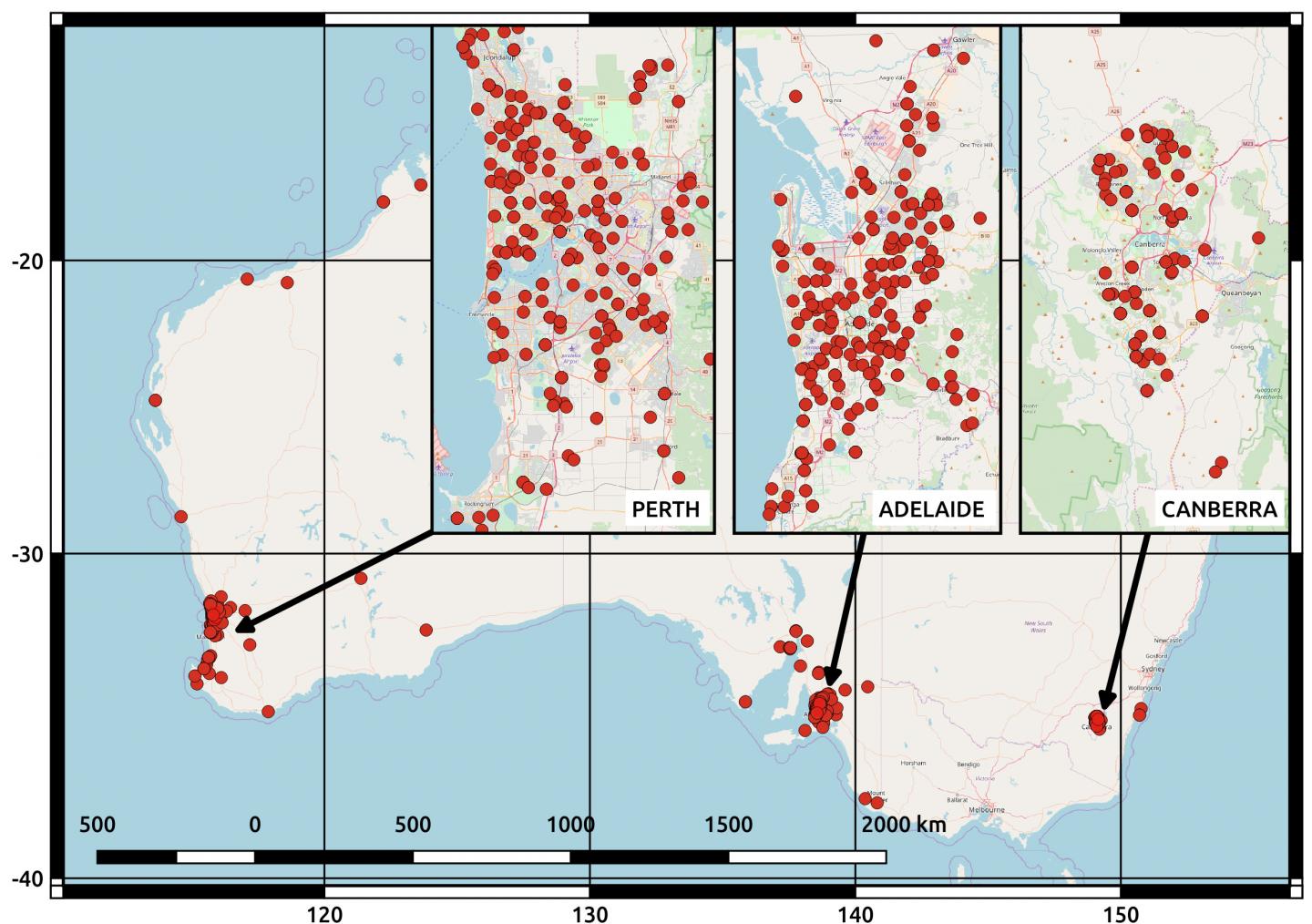More data is required to better predict and understand how solar energy can be integrated into the power grid

Credit: Australian National University
WASHINGTON, D.C., May 28, 2019 — Solar power researchers have traditionally only used the power measurements from single residential solar photovoltaic (PV) systems to estimate the power generated within a city. But one installation isn’t a good representation of all the rooftops in the city, where the time of day, panel direction, and shade cast by trees and clouds affect power production.
Data from PV systems distributed across a city is desperately needed to fully understand how this renewable energy source can be integrated into the power grid without disrupting the reliable flow of electricity on which the developing world depends.
Engineers from the Australian National University and Fraunhofer-Institute for Solar Energy Systems ISE, Germany, have provided a freely available quality-controlled and tuned dataset from 1,287 residential installations across Australia. The dataset is presented in the Journal of Renewable and Sustainable Energy, from AIP Publishing.
Describing the dataset as “a gift” for solar researchers, author Jamie Bright said, “No one has delivered a freely accessible piece of data that has six months’ worth of measurements from three different cities. That is a significant amount.”
Bright explained that previously, researchers had been pushed to extremes to gather power measurements, inventing cloud models moving across a city to “fake” PV power output for different locations.
“For the first time, you are able to easily access data and do the sort of spatial analysis needed to manage solar integration into the grid in a controlled way,” said Bright.
In Australia, where approximately 23% of all residential homes have PV systems, this is particularly relevant for the safe and reliable management of the grid. For instance, to maintain the recommended voltage for appliances and to ensure electricity supply, grid operators need to react and plan for solar power fluctuations.
By subscribing to a public website — pvoutput.org — Bright and colleagues were able to access raw PV power data supplied by the automatic logging of PV system’s electrical converters. A computer programmer extracted data from the website and put it into a database for the engineers, who then collected characteristic details about each PV system, such as its size and efficiency. Using this metadata alongside satellite images, they performed rigorous quality controls and trained tuning algorithms on the dataset to clear up any “bad data.”
“Our tuning routine is a catchall method of finding all the possible systemlike losses, such as shading, and removing them from the data. Not just deleting them, but scaling it back up to make it representative,” said Bright.
The representative scenario can then be extrapolated to greater areas and used in tandem with satellites to improve solar forecasting.
“Now we’ve proved with this dataset that live reporting PV systems can significantly improve forecasting — solar forecasting companies are deploying our approach to a real operational industrial forecasting system,” said Bright.
By providing the codes and instructions for their dataset at each processing stage, Bright hopes they are giving other researchers a head start.
###
The article, “Data article: Distributed PV power data for three cities in Australia,” is authored by Jamie M. Bright, Sven Killinger and Nicholas A. Engerer. The article will appear in the Journal of Renewable and Sustainable Energy on May 28, 2019 (DOI: 10.1063/1.5094059). After that date, it can be accessed at http://aip.
ABOUT THE JOURNAL
Journal of Renewable and Sustainable Energy is an interdisciplinary, peer-reviewed journal covering all areas of renewable and sustainable energy that apply to the physical science and engineering communities. See http://jrse.
Media Contact
Larry Frum
[email protected]
Related Journal Article
http://dx.



